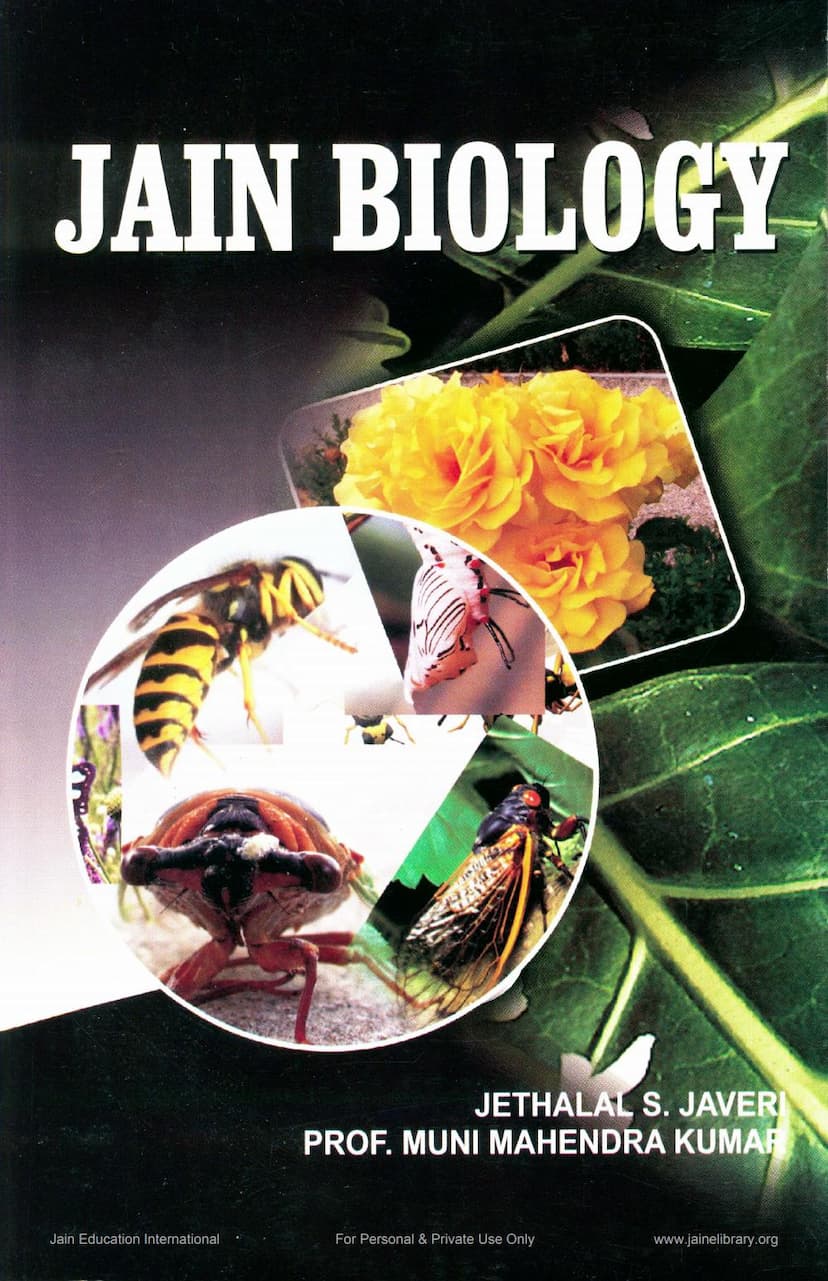Jain Biology
Added to library: September 1, 2025

Summary
Here's a comprehensive summary of the Jain Biology text, drawing from the provided pages:
Book Title: Jain Biology Author(s): Jethalal S. Zaveri & Prof. Muni Mahendra Kumar Publisher: Jain Vishva Bharati University
Overall Purpose: "Jain Biology" presents a comparative study between the biological doctrines found in ancient Jain scriptures (Agamas) and the principles of modern biology. The book aims to demonstrate the scientific spirit embedded within Jain philosophy, arguing that Jain teachings offer profound insights into the nature of life, often predating modern scientific discoveries.
Key Themes and Arguments:
- Bridging the Chasm Between Religion and Science: The preamble highlights the perceived divide between scientific and religious thought, with science demanding empirical proof and religion relying on scriptural authority. The authors intend to build a bridge between these, suggesting that a constructive study of both can be mutually beneficial.
- The Jain Classification of Life (Six Nikāyas): The core of the Jain perspective is the classification of all living organisms into six groups (Nikāyas):
- Earth-bodied (Pṛthvikāya): Organisms whose bodies are made of earth molecules.
- Water-bodied (Apakāya): Organisms whose bodies are made of water molecules.
- Fire-bodied (Taijasakāya): Organisms associated with heat/fire.
- Air-bodied (Vāyukāya): Organisms associated with air/wind.
- Plant-bodied (Vanaspatikāya): Plants, including roots, stems, leaves, flowers, etc.
- Mobile organisms (Trasakāya): Organisms capable of locomotion, possessing two to five senses.
- The Jain Concept of Soul (Jiva) and Animacy: A fundamental Jain tenet is that all six Nikāyas are living beings (Jivas), possessing a soul (Jiva) and consciousness (Cetanā), even if their consciousness is latent or rudimentary. This includes elements like earth, water, fire, and air, which modern biology generally considers inanimate. The text emphasizes that harming any of these life forms is considered a sin (pāpa).
- Modern Biology's Perspective: The book details the scientific understanding of life, covering topics like:
- The origin of life through chemical evolution (mentioning Oparin and Miller's experiments).
- Cellular structure (protoplasm, nucleus, DNA, RNA, organelles).
- The characteristics of life (organization, metabolism, growth, reproduction, irritability, adaptability).
- The concept of homeostasis (maintaining a stable internal environment).
- The classification of living organisms (kingdoms, phyla, genera, species, binomial nomenclature).
- Detailed descriptions of plant morphology (roots, stems, leaves, flowers) and animal phyla (Protozoa to Chordata).
- Processes like nutrition, reproduction (asexual and sexual, cell division like mitosis and meiosis), sex determination, and heredity.
- Comparative Analysis: The book systematically compares Jain scriptural classifications and concepts with modern biological understanding.
- Animacy of Elements: It highlights the significant difference in viewing earth, water, fire, and air as living entities in Jainism, while modern biology considers them inanimate matter.
- Sense Organs: Jainism classifies organisms based on the number of sense organs (one-sensed to five-sensed), which aligns somewhat with the increasing complexity observed in biological classifications.
- Plants (Vanaspatikāya): The scriptures attribute a more advanced consciousness to plants compared to the other four immobile categories. The concept of "individual-bodied" (one soul, one body) and "common-bodied" (innumerable souls sharing one body, like in onions or garlic) is a unique Jain classification discussed in detail.
- Nourishment (Ahāra): The book contrasts the Jain view of nourishment, where all living organisms consume other life forms (even minerals and water are seen as bodies of Jivas), with the biological concepts of autotrophs and heterotrophs. It attempts to map Jain categories of food (animate, inanimate, mixed) and intake methods (Oja, Loma, Prakṣepa) to biological nutrient needs (minerals, water, carbohydrates, proteins).
- Life-Span (Sthiti): Jain scriptures provide extensive details on the life-spans of various beings, using specific units of time (samaya, avalikā, sāgaropama, etc.), which are then compared to biological understandings of longevity.
- Karma and Rebirth: The Jain concept of karma (karman) is presented as the causal force determining the species, lifespan, and conditions of an individual's existence, explaining the diversity of life as a result of past actions. This is contrasted with the biological understanding of genetics and evolution.
- Emphasis on Ahimsā (Non-Violence): The ultimate spiritual goal in Jainism is liberation through ahimsā, which is deeply rooted in the comprehensive understanding of life. The vow of ahimsā is considered paramount, and precise knowledge of animate and inanimate entities is deemed essential for its practice. The text emphasizes that harming even the most primitive life forms is sinful.
- Scientific Basis of Jain Principles: The authors suggest that Jain scriptures, through their detailed classifications and observations, implicitly acknowledge the scientific principles of life, even if expressed in a different philosophical framework. They argue that the early Jain acharyas possessed profound knowledge about living organisms.
Structure of the Book: The book is structured into chapters that introduce modern biology, present the scriptural view of life, and then offer a critique and comparison between the two perspectives. The extensive table at the end provides a detailed comparison of various life forms based on numerous characteristic features described in Jain scriptures.
Key Takeaway: "Jain Biology" argues that Jainism offers a holistic and scientifically-grounded understanding of life, encompassing a vast array of organisms, including those often overlooked by modern science (like the animate nature of elemental forces). It positions Jain philosophy as a precursor to many biological concepts, emphasizing the interconnectedness of all living beings and the ethical imperative of non-violence (ahimsā) derived from this understanding.